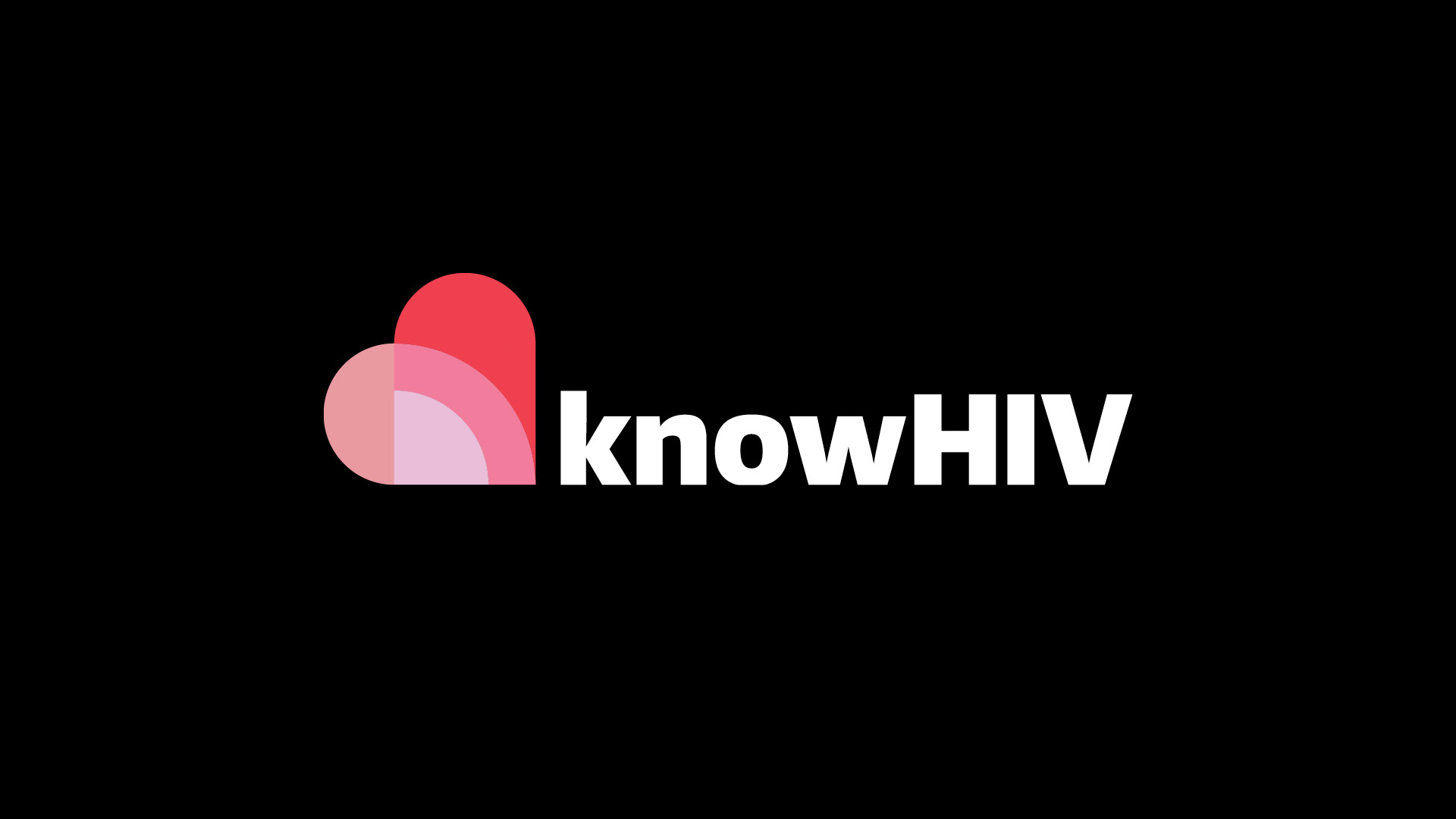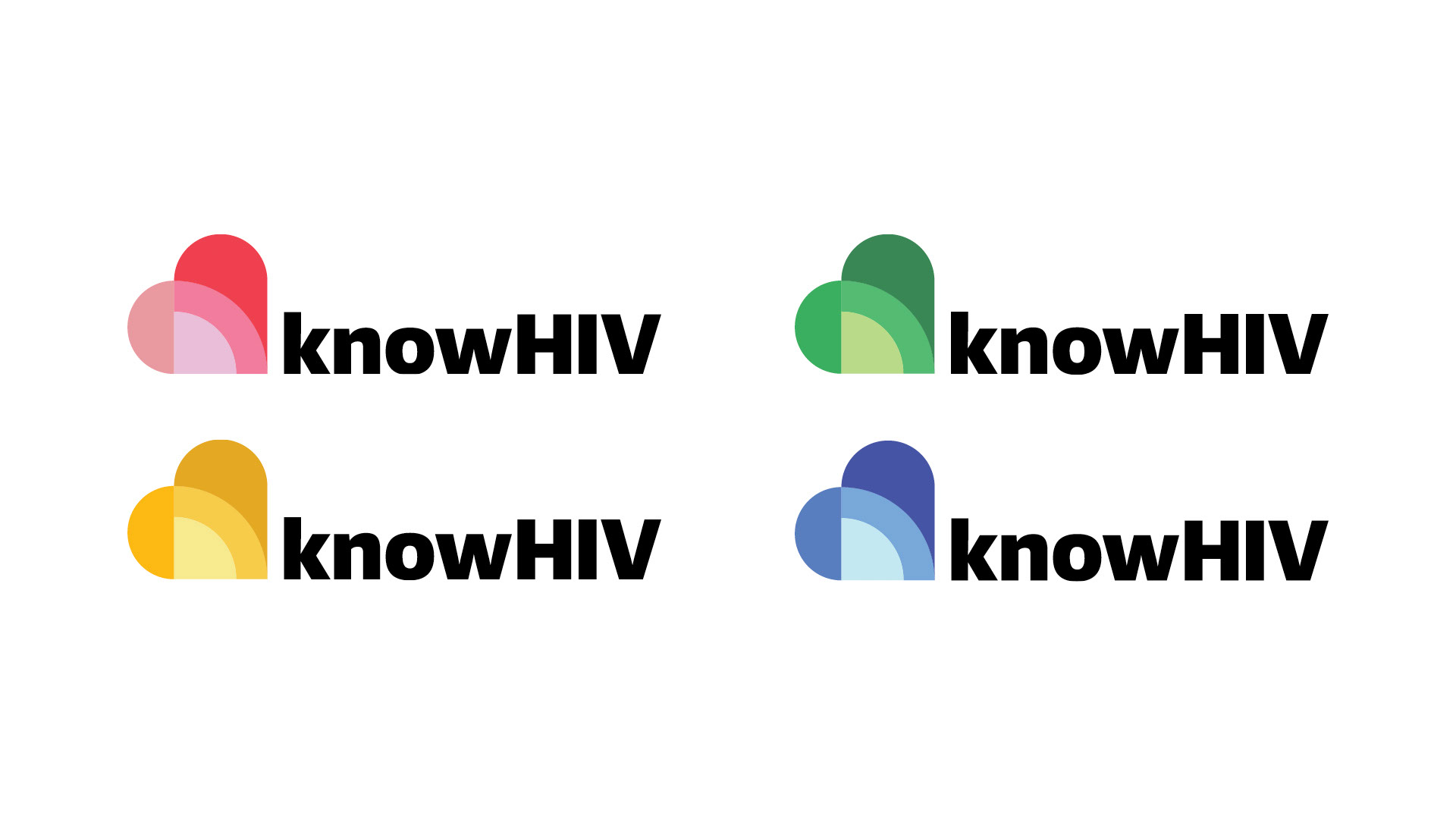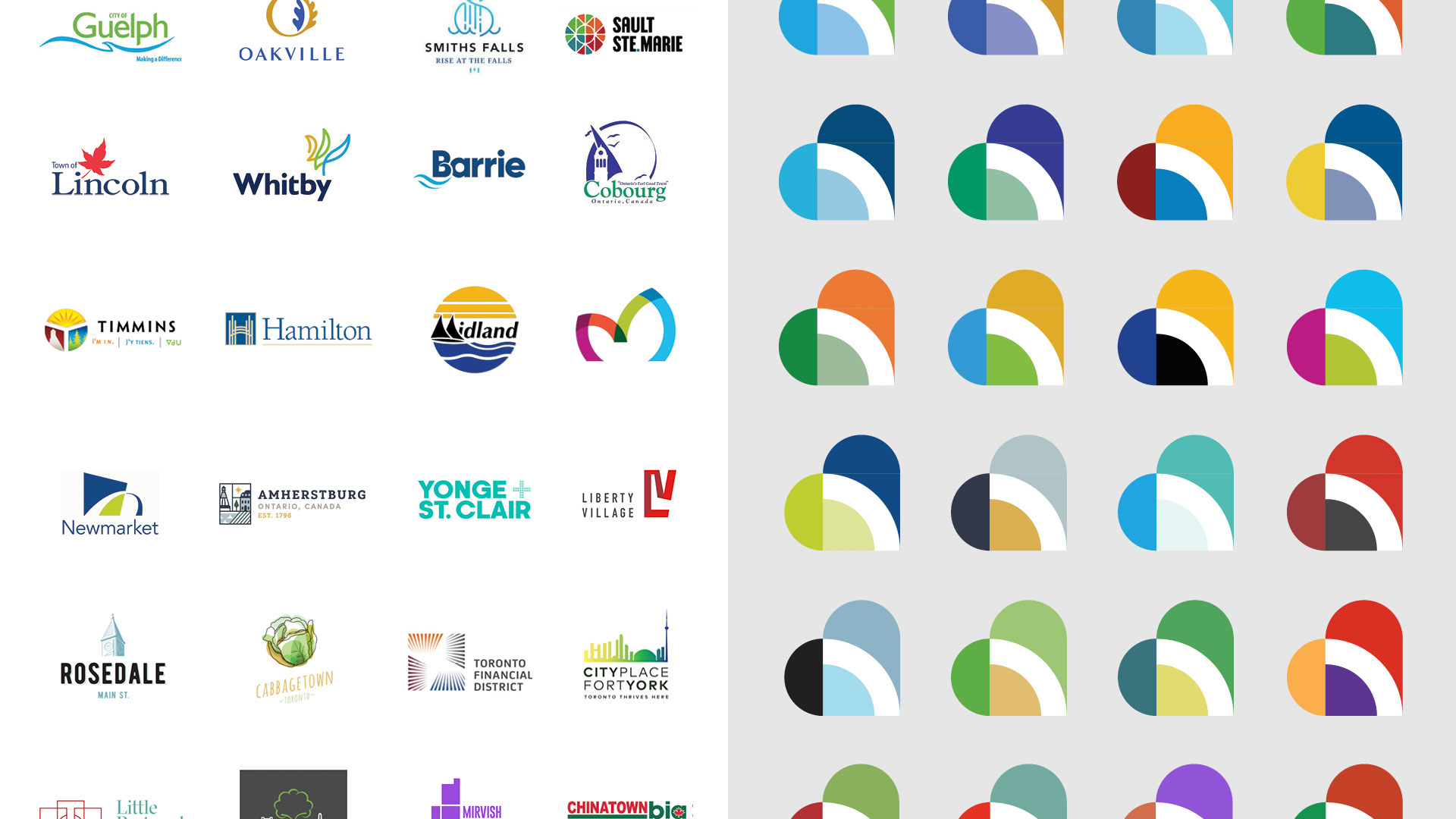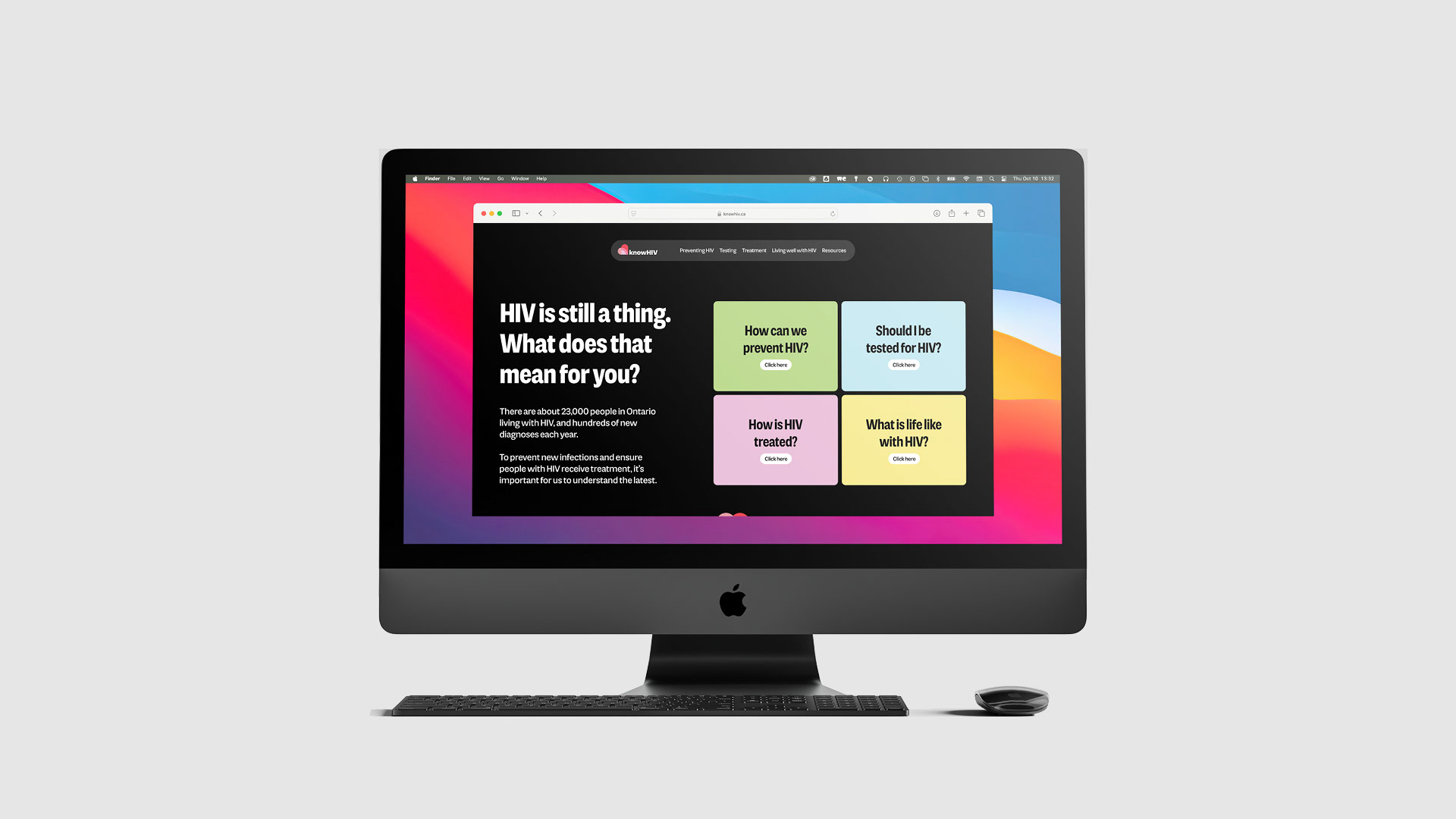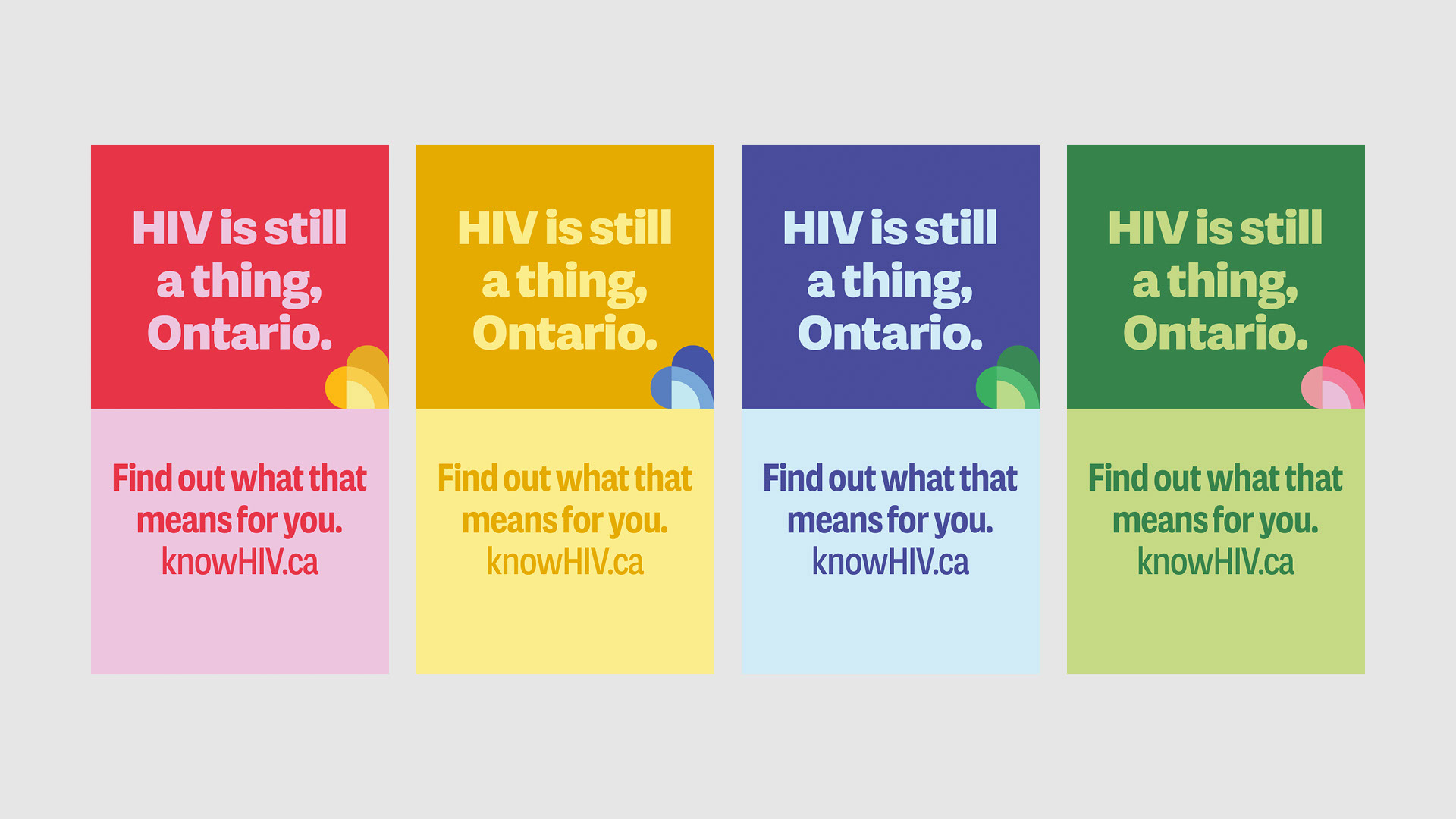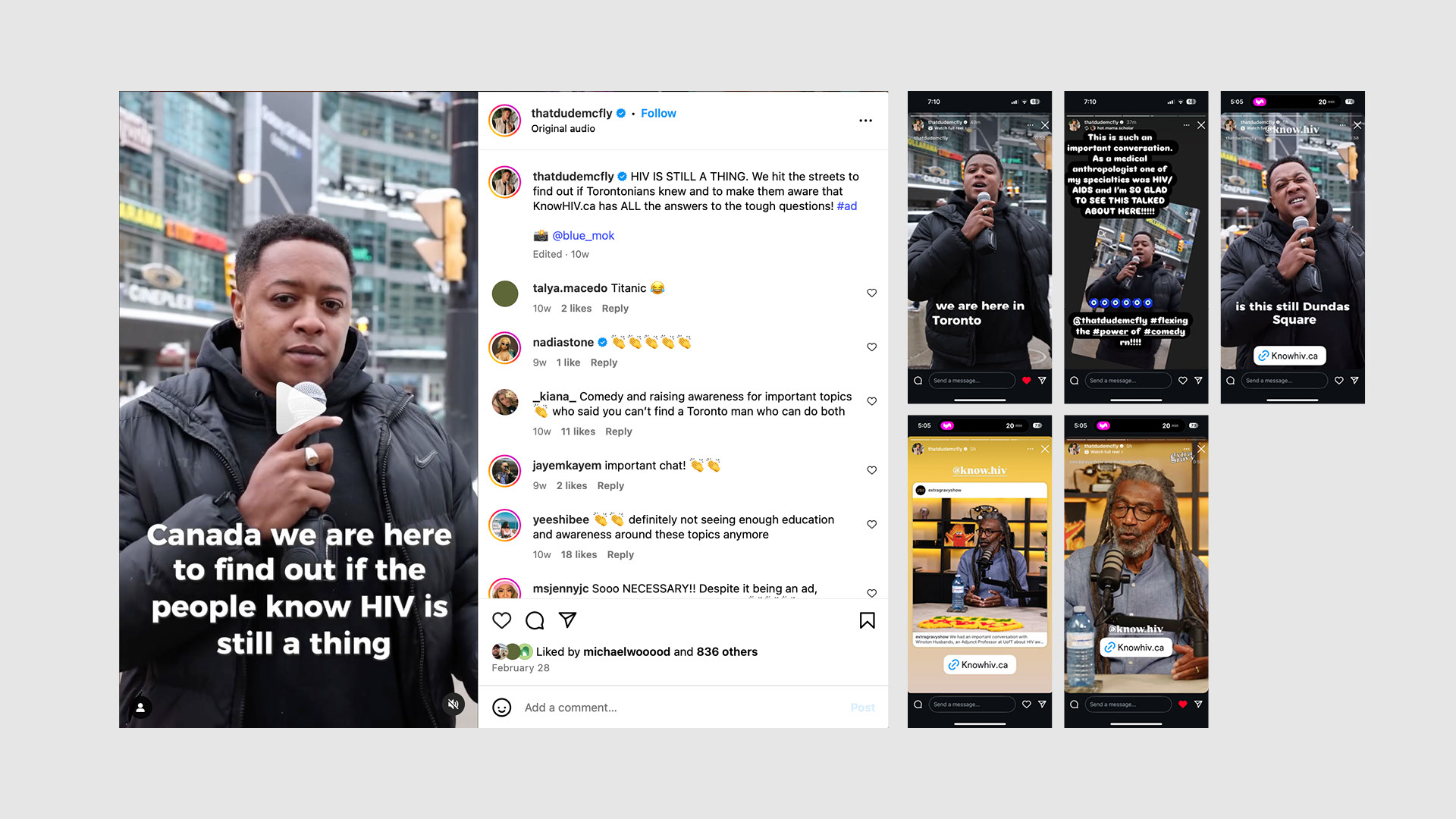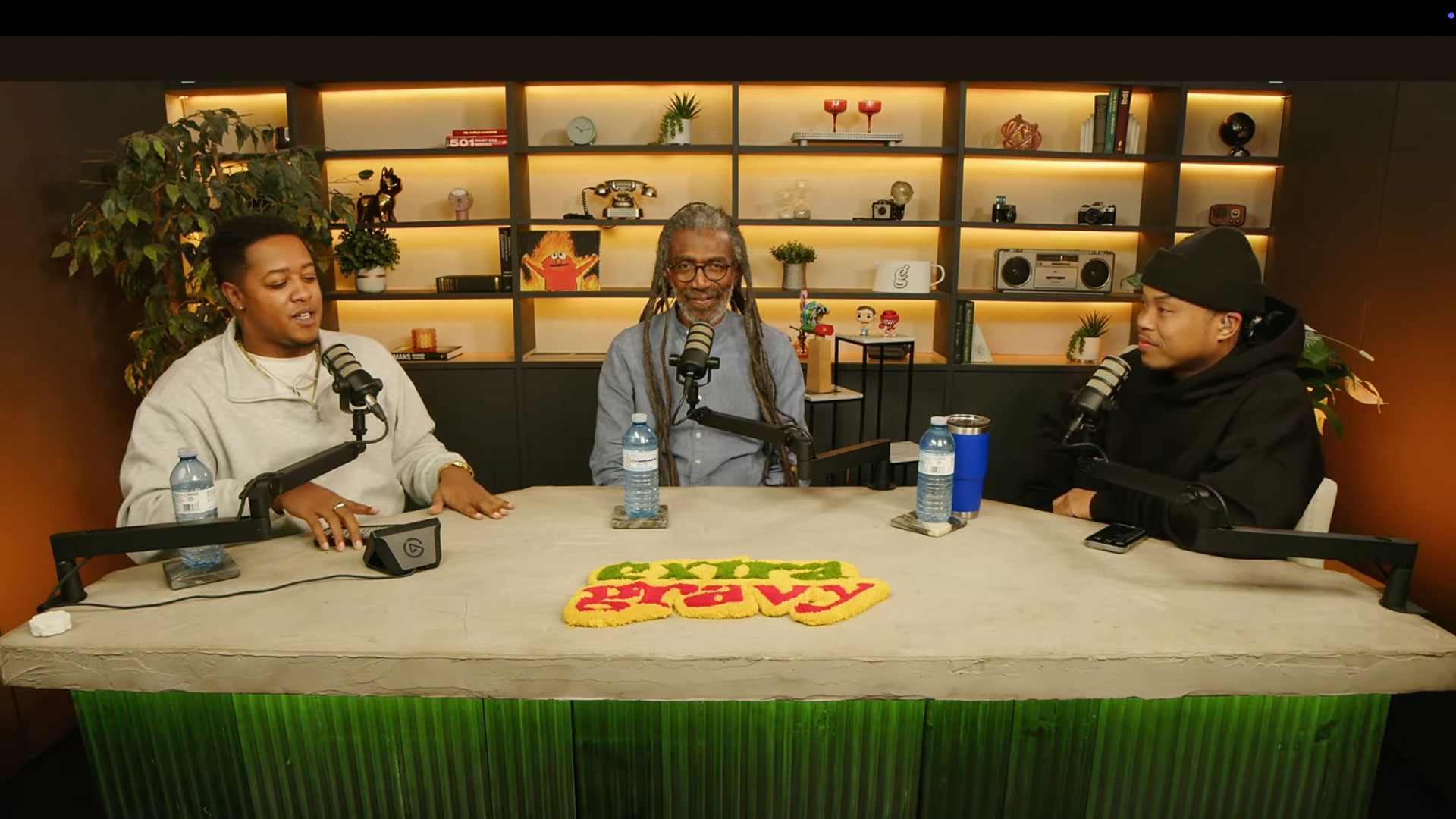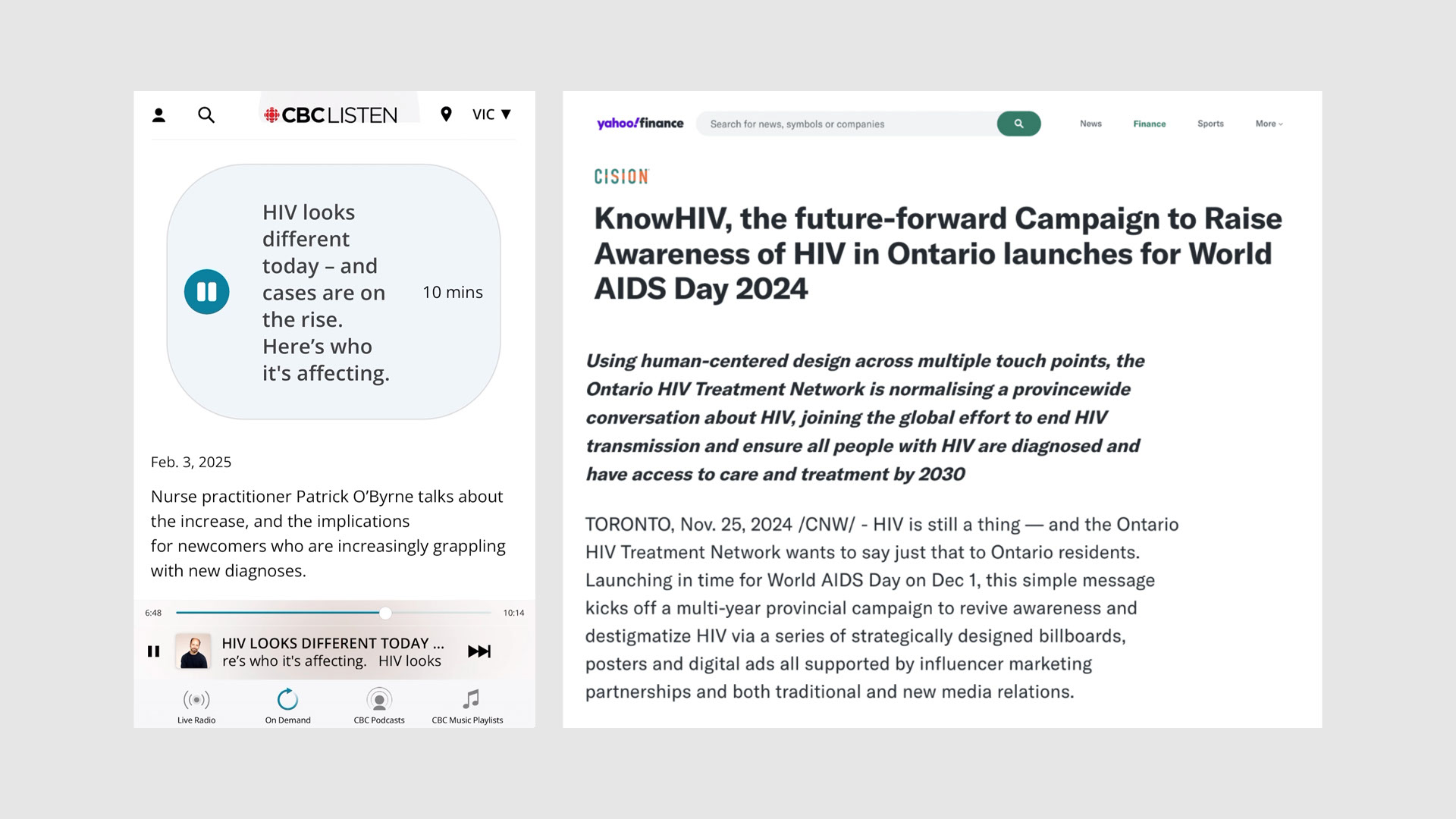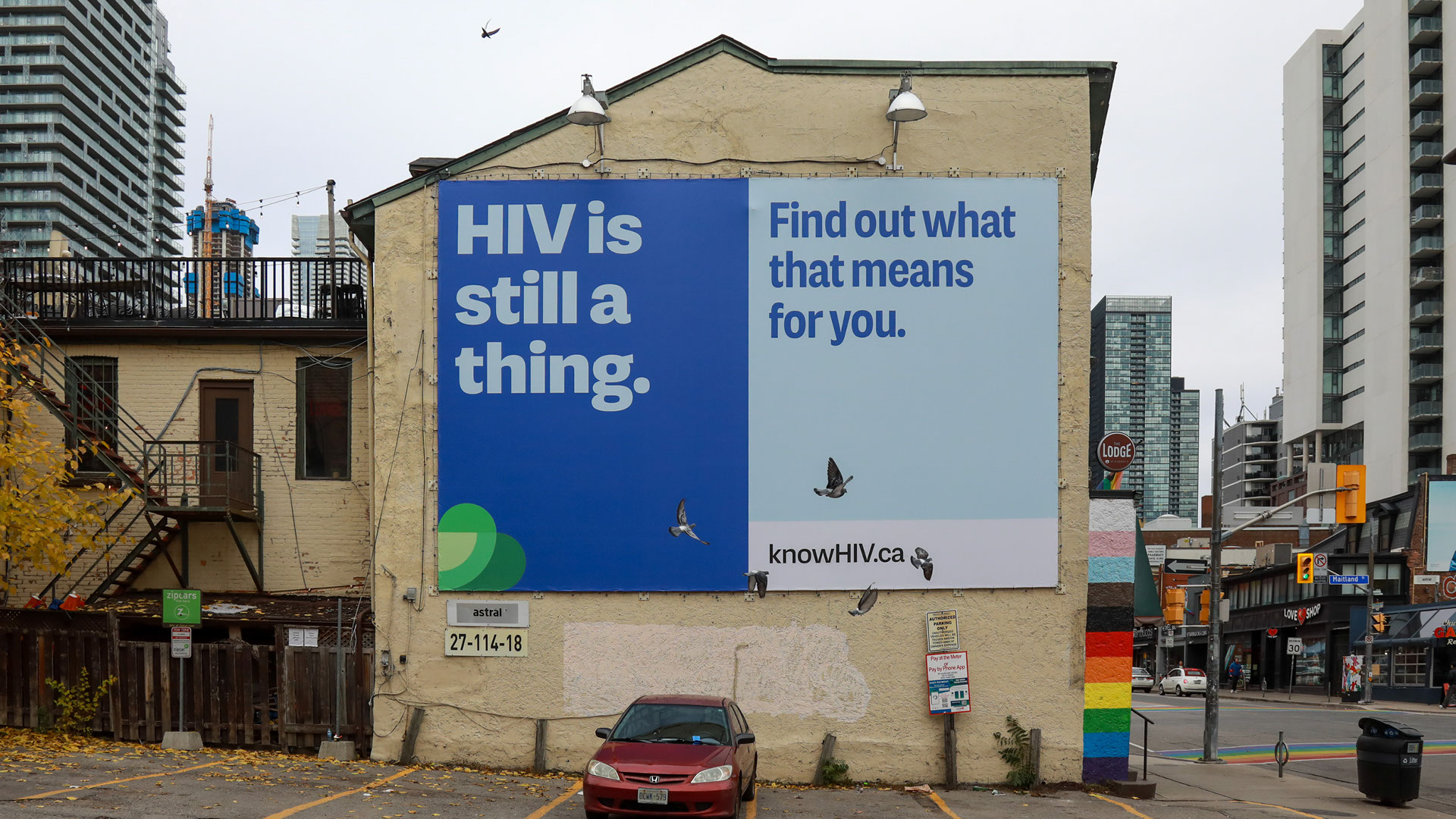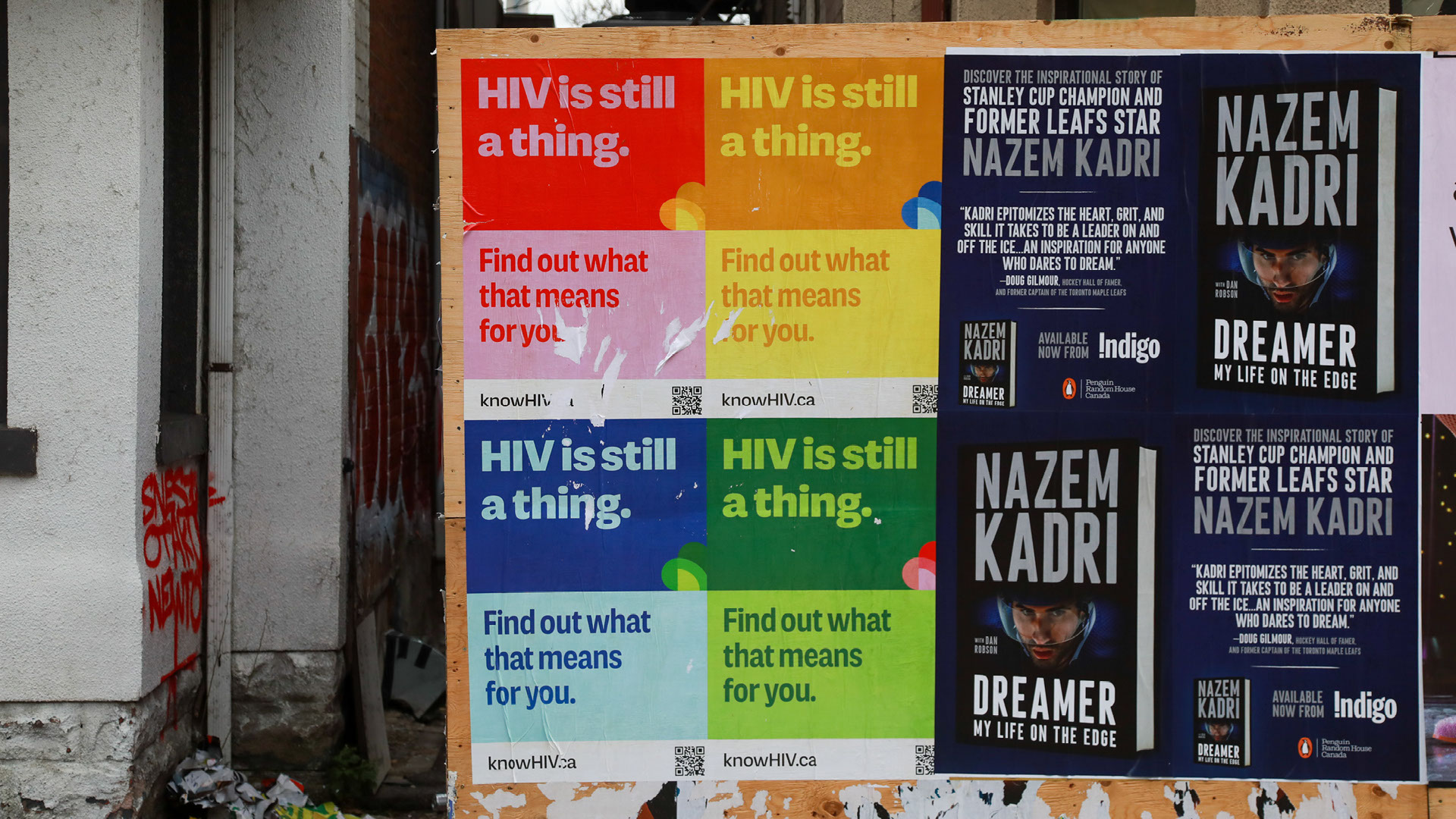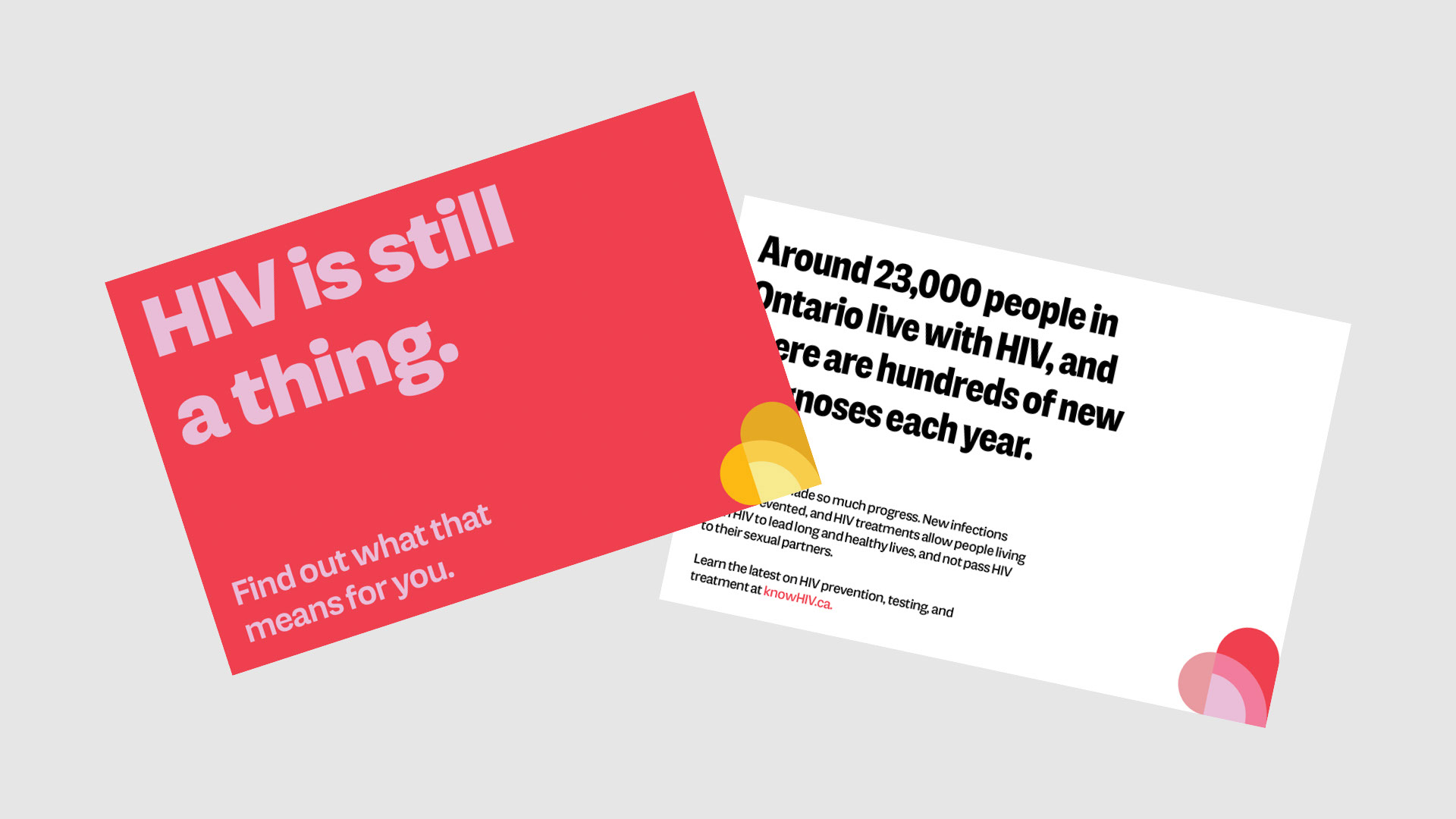A campaign that generated 178m impressions, KnowHIV restarted a public conversation around HIV with billboards and marketing across Ontario.
Brand strategy, Branding, Campaign strategy, Copywriting, Graphic design, Marketing strategy, Media buying, PR
Background and challenge
KnowHIV is among the proudest and most meaningful work we’ve had the privilege of working on. Having the opportunity to use our creativity to positively impact something so important was hugely significant for us.
This was a responsibility we took seriously, so we gave this project everything we had to create a world-class campaign.
Our client, the Ontario HIV Treatment Network (OHTN), came to us with a clear set of challenges and goals.
Today in Canada, HIV is no longer front page news. Many people think the problem is solved, may not understand transmission, or underestimate their own risk.
But in fact, new diagnoses in Ontario (and across Canada) are on the rise, and people are living with HIV who are unaware of their status.
There is a need to re-engage the public around HIV, and to help populations most affected by it to seek testing and treatment.
And so, our brief was to create phase 1 of a multi-year awareness campaign that would be handed off to the OHTN. This was the first step in a long-term plan that would provide the foundations for a brand that can grow into the future, and a campaign platform that can develop towards the overall goal of reaching and helping priority populations.
In this first phase, launching on World AIDS Day 2024 and running until March 2025, we wanted to create an accessible conversation about HIV that grows awareness, and simply brings HIV back to people’s attention – both in the general population, and specifically to groups that are typically most at-risk.
This work would then form the foundations of a trusted brand that can reach priority communities for years to come, and of a series of campaigns that would help populations most affected by HIV access responsive health services.
To do this, we had to plan, create, and execute every component of this campaign. This meant creating a brand identity, a name, campaign messaging, brand strategy, all campaign creative assets, and marketing, PR, and media buying strategies.
From inception to amplification, this was a huge undertaking. And because of tight deadlines meaning we had to launch for World AIDS Day, we had just 2 months to create a brand from scratch, and broadcast it across Ontario.
Navigating a complex organisational structure, with stakeholders across numerous levels of provincial healthcare, we overcame a range of challenges to deliver clear, bold, and resonant campaign creative with wide and effective reach across Ontario.
Process and solution
Strategy
Our approach began by clearly defining a strategy for both the campaign and our message.
We consulted at length with stakeholders across AIDS organisations, within provincial healthcare, and within the OHTN, to balance a range of considerations and priorities from the sector.
Our campaign strategy was simple and focused: bring HIV back to the awareness of the general population with large-scale out-of-home (OOH) advertising, and amplify that OOH message through media and influencers to reach specific communities.
By boldly discussing HIV in public, we wanted to create a story worthy of discussion, and bring HIV back into the collective conscience. And by talking so publicly about such a stigmatised subject, we aimed to empower people individually, and help destigmatise the virus.
Community-leading influencers would then amplify the message among our target demographics, sharing the billboards on social media, and tailoring our message to the specific needs of their community.
The global momentum of World AIDS Day would then help drive media coverage, and our strategy of delivering a public message that is clear, culturally equitable, and necessary would be newsworthy.
Finally, paid digital and social ads would reinforce the OOH message, reach an even broader audience, and ensure repeated exposure to our message to drive people to visit the KnowHIV website resource.
This website, the final destination for the campaign, would be our resource for furthering understanding and conversation, providing clear and accessible information on the most important questions.
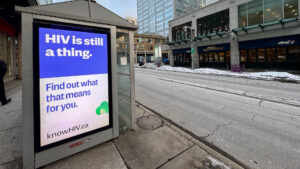
Creative
On the creative side, our goal for this campaign was to normalise the conversation around HIV, and focus on building trust. We wanted a clear, approachable, and simple message, and a brand identity that was sensitive to the seriousness of the subject matter, but felt warm, contemporary, and accessible.
Many campaigns in this sector can feel clinical and lack emotional connection, so we wanted a message that felt human. This was important to avoid fear-mongering and alarm, and also to destigmatise the virus.
From the outset, we knew a fresh approach was needed. We researched the existing communication landscape, and determined there were 4 pillars that our work would be built on. The campaign needed to be emotionally intelligent, artful, community-driven, and sustainable.
With these pillars, we undertook creative workshops to work out the core positioning of the campaign and directions for messaging. Moodboarding multiple visual, messaging, and naming approaches helped us refine our creative direction, and build towards finalising our campaign creative.
We developed a message that is simply how people speak. It avoids clinical language, and instead engages people by using day-to-day language. It’s simple and focused, and the “HIV is still a thing” tagline is an easily adapted umbrella for a range of CTAs (e.g. ‘Find out what that means for you’, or ‘Get tested here’, or ‘Ask us about treatment options’).
This flexibility means a campaign that can be localised and deliver a range of specific messages under a single recognisable campaign.
Normalising the conversation by using language like this was also a big goal for us. We destigmatise when we normalise, and resonate with people by giving them a message that is clear and easy to remember.
The brand identity was simultaneously developed to be inviting, warm, reassuring, and confident, and to give a flexible visual system that allows others to join the campaign. It is easily adapted across cultures and demographics by allowing for the colours of flags, geographies, or partner organisations to be incorporated into the logo, giving an identity that is inclusive at its core.
The lack of faces was also intentional, as we wanted to avoid associating any particular demographics with HIV, but instead to allow those amplifying our campaign (influencers and the people starting conversations) to be the faces of our campaign.
The name is clear, simple, and direct, and encourages a specific action (and draws on an empowering theme of ‘knowledge is power’). Spoken out loud, it also sounds like “No HIV”, which echoes the goal of preventing HIV transmission.
A careful balance of voice, message, and visuals gave a tone for the campaign that captured kindness, approachability, trust, empathy, and confidence. It delivered a clear message, and a campaign that exceeded expectations.
Result
From iconic billboards, to cutting edge podcasts, to legacy media radio, our campaign reached across the province and generated 178,939,671 impressions.
We achieved millions of bonus impressions across OOH, paid social, and paid digital, delivering $436,000 in added value, and hitting over 220% of planned impressions.
This was a campaign that stretched from billboards in Thunder Bay, to lecture halls in Toronto universities. We grew awareness in the general population, while ensuring the message reached specific demographics.
Our billboards covered 15 regions in Ontario, and went as far south as Windsor, as north and west as Thunder Bay, and as east as Ottawa.
We also secured the biggest and most iconic Toronto billboard in Sankofa Square (formerly Yonge and Dundas Square), right in the heart of downtown.
As well as wide-ranging billboard coverage, we had digital restobar posters in restaurants, bars, and on university campuses, wild postings across the Toronto downtown core, animations on Toronto’s public transit, and digital posters on Ottawa bus stops. Our OOH had breadth, but was also tailored to reach specific areas and communities.
With the OOH generating buzz, our carefully curated list of passionate influencers then began amplifying our message, and micro and macro influencers shared our campaign to our priority populations and started the conversation in those communities.
The key here was to make this conversation feel authentic. Our influencers added their own flavours and styles to our message to make it resonate specifically with their followers, in ways that made it meaningful.
Beyond posting on Instagram, our influencer collaborations also secured a segment on Flow 98.7, a 30-minute Extra Gravy podcast episode, and partnerships for live events with the University of Toronto and International Women’s Day. The relationships we fostered with our influencer network also opened a range of future opportunities – from Carabana activations, to sports and streetwear collabs.
In the media, we had 18 media hits, including with CBC Metro Morning, CBC Radio Ottawa, Yahoo, and Media in Canada, and meaningful conversations with global news outlets have garnered interest in covering KnowHIV as it evolves in the future.
All of this work was supported with paid social and digital ads, across Meta and YouTube, which ensured an even wider reach for awareness. Here, we achieved 164% higher video completions than planned, with a cost-per-completed-view 33% lower, and 319% more impressions at a CPM 76% lower than planned.
Through the multiple layers of our 360 degree campaign, we created the feeling of an active conversation in Ontario, reinforcing our message by reaching people multiple times and in multiple ways.
Our strategy and tactics covered a wide range of touchpoints, across traditional and non-traditional advertising, long-form and short-form content, delivering a consistent message across OOH, digital, social, radio, and live events.
From real-world billboards in people’s neighborhoods, to posts in people’s social networks, and far beyond, our campaign boldly communicated a necessary HIV message at a critical time, and used community and culture to amplify.
With the primary goal of this phase 1 campaign to simply bring HIV back to people’s attention, and restart the conversation in the province, our work was an incredible success, exceeding expectations and delivering significant added value to our client.
As well as success in this first phase, we delivered a beautiful, adaptive, and sustainable brand, approachable, fresh, and flexible messaging, and incredible foundations for KnowHIV to grow into the future and become a trusted brand in Ontario’s sexual health landscape.
KnowHIV now exists to continue raising awareness, and to foster an on-going, accessible conversation around HIV, and empower populations most affected by it.
